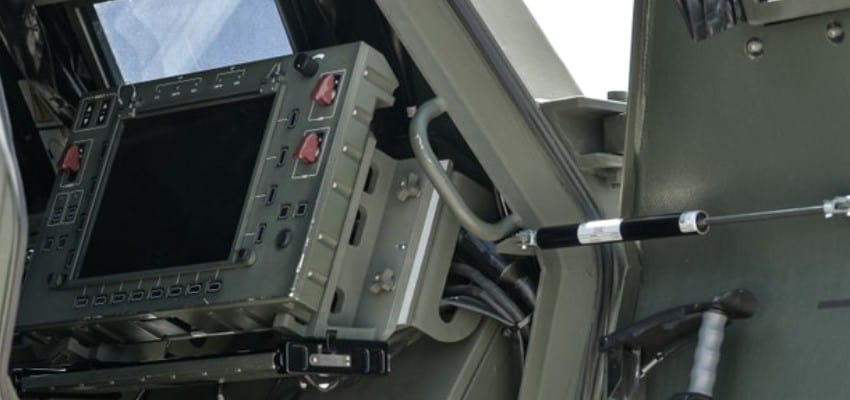|
|
Content Assessment: Assuaging Distress? Ukraine Conflict Assessments in Maps (July 29 - August 2, 2022)
Information - 90%
Insight - 91%
Relevance - 90%
Objectivity - 93%
Authority - 92%
91%
Excellent
A short percentage-based assessment of the qualitative benefit of the post highlighting the recent Ukraine conflict assessments in maps from the Institute for the Study of War.
Editor’s Note: One of the most accurate and detailed sources for ongoing updates on the Ukraine crisis is the Ukraine Conflict Update from the Institute for the Study of War. The Institute for the Study of War (ISW) is a 501(c)(3) organization and produces strictly non-partisan, non-ideological, fact-based research. ISW seeks to promote an informed understanding of war and military affairs through comprehensive, independent, and accessible open-source research and analysis. ISW’s research is made available to the general public, military practitioners, policymakers, and media members. Providing a daily synthesis of key events related to the Russian aggression against Ukraine, ISW updates may benefit cybersecurity, information governance, and legal discovery professionals as they follow the business, information technology, and legal trends and trajectories impacted by and stemming from the current Ukraine conflict.
Assessment and Maps*
Ukraine Conflict Assessments – An Overview in Maps
- Institute for the Study of War (ISW), Russia Team
- Critical Threats Project (CTP), American Enterprise Institute
General Assessment Background Info
- ISW systematically publishes Russian campaign assessments that include maps highlighting the assessed control of terrain in Ukraine and main Russian maneuver axes.
- These maps augment daily synthetic products that cover key events related to renewed Russian aggression against Ukraine.
The Russian Offensive Campaign Assessments
- August 2, 2022
- By Kateryna Stepanenko, Layne Philipson, Katherine Lawlor, Karolina Hird, and Frederick W. Kagan
Key Development
- The Russian Defense Ministry is likely trying to assuage distress that Ukraine’s effective use of the US HIMARS is causing Russian military personnel and milbloggers with inaccurate claims of destroying HIMARS launchers.
Key Takeaways:
- Unconfirmed social media reports suggest that Iran may have sent the first batch of drones to Russia and sent pilots and maintenance personnel to train on the Russian Su-35, potentially suggesting that Iran may seek to use recent aviation agreements to facilitate the acquisition of Russian combat aircraft.
- Russian forces conducted unsuccessful offensive operations northeast and northwest of Kharkiv City.
- Russian forces conducted limited ground attacks northwest of Slovyansk and east of Siversk.
- Russian forces made marginal gains southeast of Bakhmut and continued offensive operations to the northeast and southeast of Bakhmut.
- Russian forces made incremental advances around Avdiivka and are continuing attempts to push southwest of Avdiivka.
- Russian forces launched two assaults in northern Kherson Oblast and are continuing to redeploy troops to the Southern Axis.
- Russian federal subjects are forming new volunteer battalions in Novosibirsk, Saratov, Ulyanovsk, and Kurgan Oblasts, and are changing time periods for enlistment compensations.
- Ukrainian civilians are continuing to resist the Russian occupation with acts of civil disobedience and partisan sabotage as the Kremlin considers longer-term methods of population control in occupied Ukraine.
- August 1, 2022
- By Kateryna Stepanenko, Layne Philipson, Katherine Lawlor, and Frederick W. Kagan
Key Development
- ISW assesses that Russian forces were responsible for the killing of 53 Ukrainian POWs in an explosion at a Russian-controlled prison in Olenivka, Donetsk Oblast on July 28. Two US officials anonymously confirmed to Politico on August 1 that no traces of US-provided High Mobility Artillery Rocket Systems (HIMARS), Ukraine’s most precise artillery system, were found at the prison site.
Key Takeaways
- ISW assesses that Russian forces were responsible for the July 28 attack on the Olenivka prison that killed 53 Ukrainian POWs; two anonymous US officials confirmed that there is no evidence that Ukrainian forces used US-provided HIMARS, some of the only munitions Ukraine has that are precise enough to do the kind of limited damage seen in satellite and other imagery, to strike the prison.
- Russian forces are transferring elements of the Eastern Military District (EMD) from the Slovyansk area to support defensive positions along the Southern Axis.
- Russian forces did not conduct any offensive operations north of Slovyansk or around Siversk.
- Russian forces conducted unsuccessful ground assaults on settlements south and southeast of Bakhmut.
- Russian proxy authorities did not claim any territorial gains near Avdiivka as Russian forces launched unsuccessful ground assaults on Avdiivka and Pisky.
- Russian regional officials are reportedly failing to provide promised payments to the “Atal” Volunteer Battalion of the Republic of Chuvashia.
- The Kremlin is likely prioritizing propaganda and sham referenda over the welfare of Ukrainian civilians in occupied Ukrainian territories.
- Russian occupation forces are likely increasing efforts to deter and suppress partisan movements in occupied territories as partisan attacks on Russian officials and Ukrainian collaborators continue.
- July 31, 2022
- By Kateryna Stepanenko, Layne Philipson, Karolina Hird, and Frederick W. Kagan
Key Development
- Russian forces have resumed localized ground attacks northwest and southwest of Izyum and may be setting conditions for offensive operations further west into Kharkiv Oblast or toward Kharkiv City.
Key Takeaways
- The Kremlin has not responded to the International Red Cross (ICRC) request to access the Olenivka prison as of July 31, hindering the international investigation efforts.
- Russian forces conducted limited ground attacks southwest and northwest of Izyum, consistent with ISW’s assessment that Russian forces may be setting conditions for advances northwest of the current Izyum-Slovyansk line.
- Russian forces continued ground attacks northwest of Slovyansk, northeast of Siversk, and to the east and south of Bakhmut.
- Russian forces made marginal gains in the Avdiivka area and continued ground attacks towards Avdiivka and Pisky.
- Russian authorities began recruiting volunteers for the Nevsky and Ladoga Battalions in Leningrad Oblast, Russia.
- Russian occupation authorities continued to prepare for a referendum in Kherson Oblast and took measures to depict support for Russian control of the occupied territories.
- July 30, 2022
- By Kateryna Stepanenko and Frederick W. Kagan
Key Development
- Russian forces are likely prioritizing offensive operations toward Bakhmut and around Donetsk City at the expense of efforts to take Siversk and Slovyansk
Key Takeaways
- Russian forces conducted ground assaults around Bakhmut and the environs of Donetsk City as well as southwest of Izyum. One assault east of Bakhmut made limited gains.
- Russian forces did not conduct ground assaults near Siversk again, suggesting that they are deprioritizing operations in that area.
- Satellite imagery showed Russian reinforcements concentrated near the Ukrainian border on the ground line of communication (GLOC) leading toward Izyum.
- Ukrainian forces disrupted a Russian ground assault in Kherson Oblast with preemptive artillery strikes.
- Ukrainian officials claim that damage to the railway bridge across the Dnipro near Kherson renders Russian forces unable to resupply their positions on the west bank of the river by rail.
- July 29, 2022
- By Kateryna Stepanenko, Karolina Hird, Grace Mappes, Layne Phillipson, Katherine Lawlor, and Frederick W. Kagan
Key Development
- A kinetic event killed and wounded scores of Ukrainian POWs in Russian-occupied Olenivka, Donetsk Oblast, on July 28.[1] Ukraine and Russia are blaming each other for the attack and available visual evidence appears to support the Ukrainian claim more than the Russian, but ISW cannot independently assess the nature of the attack or the party responsible for it at this time.
Key Takeaways
- A kinetic event killed and wounded scores of Ukrainian POWs in Russian-occupied Donetsk Oblast on July 28. Ukraine and Russia are blaming each other for the attack. Available visual evidence appears to support the Ukrainian claim more than the Russian, but ISW cannot independently assess the nature of the attack or the party responsible for it at this time.
- Ground fighting continued north of Kharkiv City with no significant change in control of terrain.
- Russian forces attempted a limited ground assault in Kherson Oblast and continued conducting combat operations without creating strike groups along occupied lines.
- Russian regional outlets reported the recruitment and establishment of an additional volunteer battalion in the Republic of Buryatia and the formation of a reserve battalion in Novosibirsk.
- Members of Russian President Vladimir Putin’s United Russia party traveled to occupied Ukrainian territories to promote an organization called “We Are Together with Russia,” likely to present the façade of a “grassroots” call for the Russian annexation of occupied Ukraine and to prepare for falsified annexation referenda.
We do not report in detail on Russian war crimes because those activities are well-covered in Western media and do not directly affect the military operations we are assessing and forecasting. We will continue to evaluate and report on the effects of these criminal activities on the Ukrainian military and population and specifically on combat in Ukrainian urban areas. We utterly condemn these Russian violations of the laws of armed conflict, Geneva Conventions, and humanity even though we do not describe them in these reports.
Chronology of Maps from July 29-August 2 2022 – Mouseover to Scroll
Ukraine Conflict Maps - 072922-080222See the Institute for the Study of War Interactive Map of the Russian Invasion
Read the latest Ukraine Conflict updates from the Institute for the Study of War
* Shared with direct express permission from the Institute for the Study of War (ISW).
About the Institute for the Study of War Research Methodology
ISW’s research methodology relies on both primary and secondary sources, enabling researchers to develop a comprehensive understanding of the situation on the ground. In order to analyze military and political developments in any given area, ISW’s research analysts must wholly understand the systems of enemy and friendly forces. They must also understand the population demographics, physical terrain, politics, and history of that area. This lays the analytical foundation for understanding the reasons for particular developments and fulfilling their assigned research objectives. ISW analysts also spend time in places like Iraq, Afghanistan, and elsewhere in order to gain a better understanding of the security and political situation and to evaluate the implementation of current strategies and policies. Our researchers compile data and analyze trends, producing a granular analysis of developments in areas of research, producing an accurate, high-resolution, timely, and thorough picture of the situation. ISW’s research methodology guarantees its success and commitment to improving the nation’s ability to execute military operations, achieve strategic objectives, and respond to emerging problems that may require the use of American military power.
About the Institute for the Study of War
The Institute for the Study of War advances an informed understanding of military affairs through reliable research, trusted analysis, and innovative education. We are committed to improving the nation’s ability to execute military operations and respond to emerging threats in order to achieve U.S. strategic objectives. ISW is a non-partisan, non-profit, public policy research organization.
Learn more, get involved, and contribute today.
Additional Reading
- [Annual Update] International Cyber Law in Practice: Interactive Toolkit
- Data Embassies: Sovereignty, Security, and Continuity for Nation-States
Source: ComplexDiscovery

























